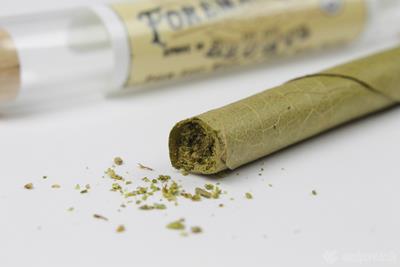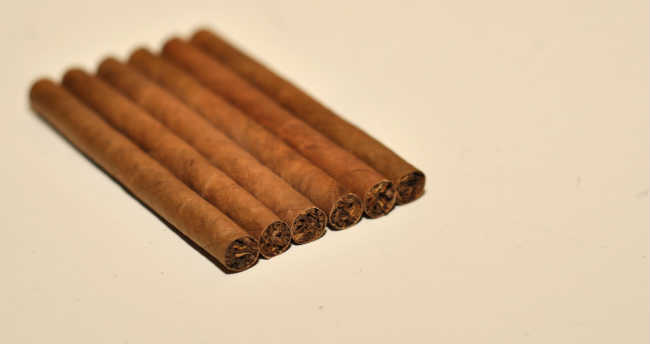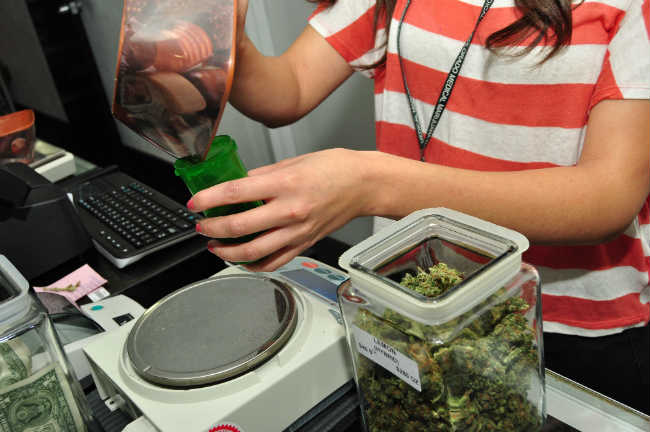
Saturday November 6, 2021
By Trevor Ross
 420 Culture
420 Culture
Traditionally, a blunt is a hollowed-out cigar refilled with ground cannabis, or ground cannabis rolled in tobacco leaf like a cigar. The term “blunt” originally derived from Blunt brand cigars, once made in Philadelphia, and purchased in order to empty because they were cheap. Similarly, other slang terms originate from other brands--a “dutch” from Dutch Masters, or an “el p” from El Producto. But most people aren’t still hollowing out cigars, and now empty wraps are commonly available.
Blunts offer some tremendous benefits like lasting much longer than a joint (a well-rolled blunt can burn for over 20 mins), being easier to pass around, and, well, holding a lot of weed.
Unfortunately, the tobacco leaf wrap is an unnecessary health risk. Fortunately, there are alternatives.
Tobacco and Tobacco Alternatives
Most people don’t need to be reminded that tobacco is bad for your health, but just in case: tobacco is bad for your health. Tobacco belongs to the nightshade family, Solanaceae, which naturally produce the toxic alkaloid, nicotine. In addition to being highly addictive, nicotine inhibits REM sleep, causes heart palpitations, and dizzying head rushes. According to the American Cancer Society, tobacco use remains the leading preventable cause of death in the US, accounting for about 1 in 5 deaths each year.
And while combusting any plant carries health risks, when it comes to blunts, those risks can be minimized by a simple substitution — switching out the tobacco leaf for a tobacco alternative — in the form of palm or hemp wraps. These wraps contain no nicotine, thus removing the alkaloid’s deleterious effects from the equation.

The most prominent name in palm leaf blunts is currently King Palm, though the name “King Palm” is technically misleading now. The company actually produces wraps made from Cordia leaves.
A distant relative of the forget-me-not, Cordia grows across southeast Asia into short, bushy trees that produce thick, malleable leaves. And unlike the powerful odor of burnt tobacco, Cordia leaves have a subtle taste and aroma. The Cordia isn’t strong enough to compete with the cannabis, and so only lifts it with a subtle, earthy flavor that blends away in your breath.
Cordia isn’t the only leaf used as a tobacco alternative either. Tendu leaves are becoming more common, and have been used to roll bidi cigarettes in India for years. Hemp wraps are also gaining popularity, especially in dispensaries (more on that below)
Where to Find Palm Leaf Blunts
If you’re shopping in the US, the biggest name in town is King Palm. They can be found at most smoke shops and at many convenience stores. Canadians will be more familiar with Amico Wraps, though there are more brands on both sides of the parallel. Despite the name, King Palm uses Cordia leaves, while Amico does not disclose their actual leaf, only calling it “non-tobacco.”
Remember how we mentioned that hemp wraps are commonly found in dispensaries? Additionally fueling the popularity of tobacco-alternative blunts is that traditional blunts and blunt wrappers qualify as tobacco products, which would dispensaries are not allowed to sell.

However, under their cannabis license, they are still free to sell palm leaf, hemp, and other wraps. So check with your local dispensary. If they sell wraps at all, there’s a good chance they carry what you’re looking for. Juicy J and Cyclone are two of the biggest names in hemp wraps, but there are many on the market.
Though dispensaries may stock them regularly, these can be a little harder to find at a typical convenience store, however a headshop or smoke shop will almost certainly have some in stock. That goes for online headshops, too. If you're looking for something specific, the Internet will have the widest selection.
Summary
Palm leaf blunts are an alternative to traditional blunts made from tobacco cigars. Tobacco belongs to the nightshade family which naturally produces nicotine, an addictive chemical that has been linked to physical and cerebral health problems. But palm leaf blunts are made from safer, and more mild-tasting, leaves.
The phrase “palm leaf blunt” has come to stand for any blunt wrap that uses a tobacco alternative. These may be made from cordia, tendu, or even hemp. King Palm, perhaps the biggest retailer of palm leaf blunts, uses cordia leaf.
Non-tobacco blunts and wraps may be purchased online or in-person from many dispensaries. In fact, a contributing factor to the rise in these tobacco alternatives is that dispensaries require a separate license to sell tobacco products, including tobacco blunts, and so began promoting tobacco alternatives which were legal to sell.
It is worth noting that a blunt is not the same as a canna-cigar (or “Thai stick”), which is cannabis packed around a skewer, dipped in concentrate, and set before the skewer is removed, leaving a hole to smoke through.
Can you smoke palm leaves?
Yes. Palm and other leaves have been rolled and smoked since at least the 10th century Mayans.
Do palm leaves contain nicotine?
No. Nicotine is produced by plants in the nightshade family, which includes tobacco. But palm, cordia, tendu, and other tobacco alternatives belong to different families of plants, and do not produce nicotine.
Are palm leaves addictive?
No. Because tobacco alternatives like cordia and tendu leaves do not produce or contain nicotine, they will not be chemically addictive.
What do you prefer your blunts rolled in? Let us know in the comments!
Photo Credit: WeedPornDaily (license)







